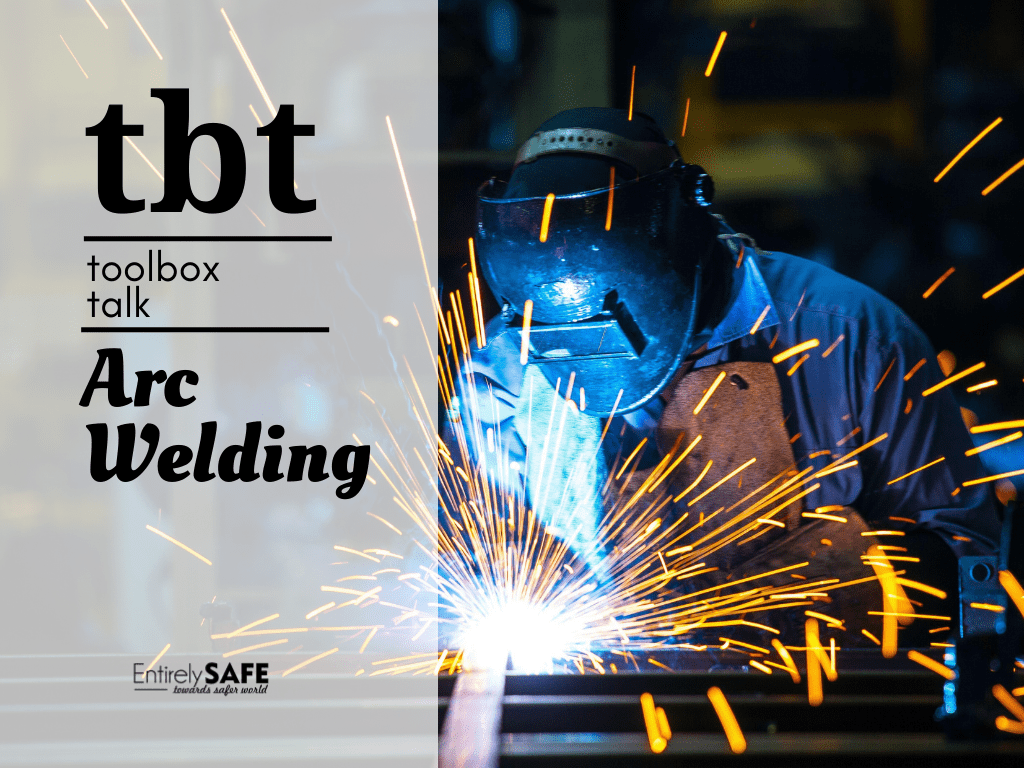Arc Welding Toolbox Talk

Before the Toolbox Talk
This safety talk is designed for discussion leaders to use in preparing safety meetings. Set a specific time and date for your safety meeting. Publicize your meeting so everyone involved will be sure to attend. Review this safety talk before the meeting and become familiar with its content.
Make notes about the points made in this talk that pertain to your workplace. You should be able to present the material in your own words and lead the discussion without reading it.
Seating space is not absolutely necessary, but arrangements should be made so that those attending can easily see and hear the presentation. Collect whatever materials and props you will need ahead of time. Try to use equipment in your workplace to demonstrate your points.
Give the safety talk in your own words. Use the printed talk merely as a guide. The purpose of a safety meeting is to initiate a discussion of safety problems and provide solutions to those problems. Encourage employees to discuss hazards or potential hazards they encounter on the job. Ask them to suggest ways to improve safety in their area. Don’t let the meeting turn into a gripe session about unrelated topics. As a discussion leader, it’s your job to make sure the topic is safe. Discussing other topics wastes time and can ruin the effectiveness of your safety meeting.

Toolbox Talk: Arc Welding
Do you know the dangers associated with arc welding equipment? Do you know how to identify hazards related to your operation? Most arc welding equipment is designed to operate safely in high humidity, rainy and windy weather, and in the presence of vapors, corrosive fumes, dirt, dust, and gases. Wet equipment or wet welders can spell disaster. Wet equipment should be dried off, but only AFTER the power source has been disconnected. Before using welding cables, check the insulation and lead cables for exposed conductors.
Replace all weld lead spliced within lO feet of the holder. To reduce the chance of shock, check the electrode holders for loose or exposed connections. If metal, inert-gas-shield welding is used, examine the gas hose for leaks. Never coil or loop electrode cable around any part of your body. Be sure the welding machine frame is properly grounded; double-check the ground connections. Never use pipelines carrying gases or flammable liquids or conduits carrying electrical conductors as grounds. Don’t ground to a building structure that is a great distance from the weld. Wet floors are dangerous and can cause electrical shock. Special precautions must be taken.
Make sure the insulation is sufficient on higher open-circuit voltage. If you are AC welding under wet conditions, including perspiration, be sure to have an automatic control to reduce the no-load voltage; this prevents electrical shock. Do not change the polarity switch when your machine is under load. Arcing because of high current can burn the switch contact surface and can seriously burn you. Make sure there is a power disconnect switch on the welding machine; never use a machine without one. This switch shuts down the machine immediately in an emergency. Electrode holders should be stored where they cannot make contact with personnel, conductors, fuels, or compressed gas tanks.
If you are not going to be welding for a few minutes, disconnect the power source and remove the electrodes. Never strike an arc on an industrial gas cylinder. Always keep electrodes and their holders and any other live parts away from gas cylinders.
Note: If there have been welding accidents in your area, be prepared to discuss them with your employee. Listen to their ideas; they may have the answer you have been looking for. Also, mention any hazards that are unique to your particular operation.
Interactive Discussion
- Have you or someone you know been injured or nearly injured while carrying out this activity? What happened?
- How can we stay safe today?
- What do we do at the worksite to prevent injuries related to this activity?
After the Toolbox Talk
At the end of the meeting, ask employees to sign a sheet on the back of this talk as a record that they attended the safety meeting. Keep this talk on file for your records.

